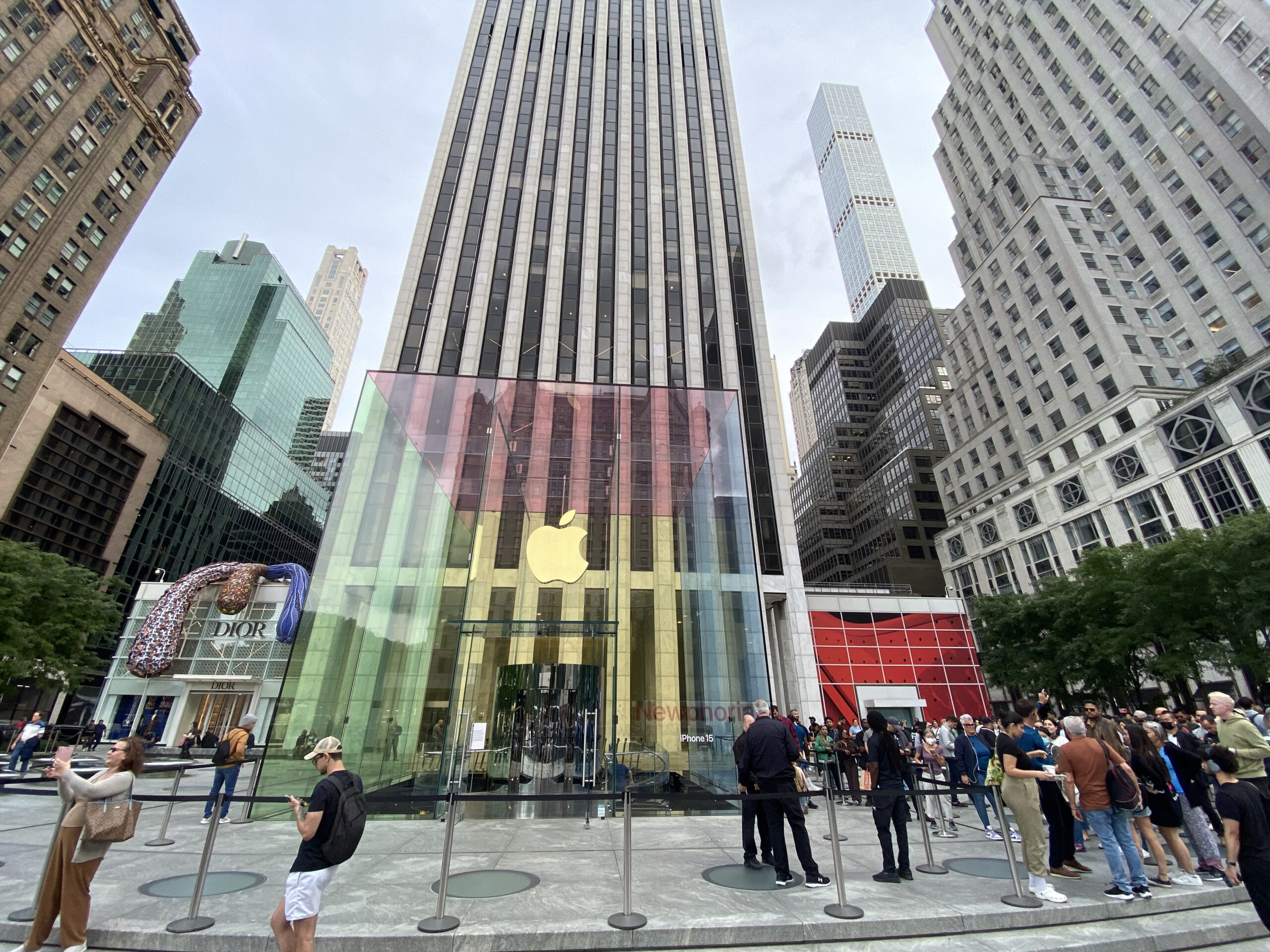A Movie Not Seen: Apple’s War
In May, the Director of the PTO famously told Congress that the patent wars were a sign of innovation – and that the thermonuclear warfare promised and launched by Steve Jobs was a movie we had seen before. In fact, “we’ve seen this movie many times before.” He assures us: “These things happen. They sort themselves out.”
Most innovators believe that exciting and functional products are the best sign of innovation, and most people would not agree that because World War I happened, it was okay to have a World War II. Even though both those wars “sorted themselves out” and were followed by peace and economic growth.
But for those who sat through it, World War II was decidedly not the same movie as World War I. And just because Steve Jobs was an innovator does not make his version of thermonuclear war a sign of innovation. True, as apologists for the current debacle in tech patents point out, there have been big battles over patents, such as Henry Ford’s epic 8-year fight against a patent lawyer for the right to manufacture automobiles without paying a tax. There have been battles over radio and aircraft patents so disruptive that the federal government has had to step in.
Battles kill. They generate uncertainty. They slow and block innovation. They pull innovators away from innovation. They hurt companies, customers, and consumers.
Why is this movie different? Unlike other patent epics, it is a world war – with multinational companies suing each other all over the globe. Apple’s war against Android started in the U.S., just as trolls began as a U.S. phenomenon. But today battles are taking place in Australia, Korea, the U.S., the U.K., Germany, the Netherlands…. This war is taking place in an unprecedented environment where national patent offices are handing out hundreds of thousands of IT patents each year – a single one of which can be used to kill an entire product line if an injunction is awarded.
It is also different because it involves design patents. In fact, four of the patents that Apple is asserting are design patents, and Apple attributes 80% of its claimed $2.5 billion in damages to design patents. On one of these, the notorious black rectangle, Apple has been granted a preliminary injunction barring Samsung’s Galaxy Tab from the entire U.S. market, despite the fact that the benefit of a tablet is all the things that you can do with it – not the color and shape of the perimeter!
Design patents are not for real inventions. They are supposedly for novel and non-obvious ornamental designs but they have long been considered of marginal value and difficult to enforce. The 1966 President’s Commission on the Patent System recommended abolishing design patents:
The Commission believes strongly that all inventions should meet the statutory provisions for novelty, utility and unobviousness and the above subject matter [designs, as well as computer programs] cannot readily be examined for adherence to these criteria.
Yet in this case, despite the fact that it is supposed to be decided by a jury, the judge has already publicly concluded that the black rectangle design patent is likely valid and infringed and has ordered a preliminary injunction taking Samsung’s Galaxy Tab 10.1 off the market. So here a mere design patent on a very simple looking device is being used to deprive consumers of the entire value – at the behest of a company that already has 68% of the market, up from 61% last year.
The judge’s reasoning?
One who elects to build a business on a product found to infringe cannot be heard to complain if an injunction against a continuing infringement destroys the business so elected.
This statement completely ignores business reality in the IT sector – the sector that has been the wellspring of most of the innovation experienced in the global over the past 30 years. As panelists in the 2002 FTC hearings made clear, there are so many patents out there – and so much prior art, that it is impractically costly to find and fully evaluate patents that you may be infringing ahead of time. Even if one did, there are tens of thousands more in the pipeline hidden from view. Patent infringement in IT is an unavoidable risk and that risk is a cost of doing business – not a moral failing worthy of forfeiting entire product lines, as Judge Koh appears to believe.
The FTC hearings focused on utility patents not design patents, and the particular problem here has to do with the proper scope of the design patent – the very problem described by the President’s Commission in 1966. Judge Koh goes on to publicly express her views about the merits of the case:
This Court [Judge Koh, not the jury] previously found the Galaxy Tab 10.1 to be substantially similar “in the eyes of the ordinary observer” to the D’889. Indeed, the Court noted that the GalaxyTab 10.1 is “virtually indistinguishable” from Apple’s iPad and iPad 2.
Yet in June, a British judge concluded that the Galaxy Tab did not infringe Apple’s black rectangle design (famously stating that the Tab was “not as cool”), even ordering Apple to post ads publicly stating that Samsung did not infringe the iPad’s design right.
Judge Koh continues with a very abbreviated public interest test:
Samsung argues that the public interest favors competition and thus weighs against issuing an injunction which would preclude a product from the market. On the other hand, Apple argues that the public interest weighs in favor of enforcing patent rights. The Court agrees with Apple that the public interest favors the enforcement of patent rights here.
Judge Koh was a patent litigator before she become a judge, and it is not inconceivable for a patent litigator to believe that the world revolves around patents. However, in the landmark FTC study, the panelists made it clear that competition was more important than patents in promoting innovation in the IT sectors.
Judge Koh goes on:
Although Samsung has a right to compete, it does not have a right to compete unfairly, by flooding the market with infringing products.
“Flooding the market”? Isn’t what companies with strong products are supposed to do? Isn’t that what consumers want? Again, it is common knowledge that IT products may inadvertently infringe dozens if not hundreds of patents. Patent attorneys and litigators undoubtedly do well from widespread infringement, inadvertent or otherwise. However, for those on the other side of the garden wall, it is clear that there are far too many patents. As Cisco’s worldwide patent counsel explained at the FTC hearings:
[T]here are too many patents to be able to even locate which ones are problematic. I used to say only IBM does clearance searches… but IBM tells me even they don’t do clearance searches anymore.
That was in 2002, when there were a tiny fraction of the patents that now weigh heavier and heavier on the IT sector. That was before the smartphone and the tablet, which combined the technology of wireless communications, location services, imaging, the cloud, electronic commerce, social networking, and the personal computer in one small package. Last year, defensive patent aggregator RPX estimated that 250,000 patents could be implicated in a smartphone. Patents have become lottery, bought and auctioned in bulk in the expectation that among the thousands there will be a few that will “read” conclusively on some product unfortunate enough to have already “flooded” the market.
In the U.S., only the judge can issue an injunction, but either party may demand that the basic decisions on patent validity, infringement, and damages be decided by a jury. In the global theater, a jury trial means that Samsung, despite the $9 billion it has invested in U.S. facilities, is at a disadvantage since U.S. juries side with domestic patent litigants 64% of the time. Apple, despite the fact that it, too, manufactures in China and works assiduously to reduce its U.S. taxes, has the home court advantage of a trial in San Jose, a few miles from Apple’s worldwide headquarters in Cupertino.
It is the judge’s job to keep this kind of information from the jury – to exclude all evidence that may be prejudicial, irrelevant, or immaterial. Accordingly, Judge Koh excluded Samsung from showing that it had developed similar designs in-house well before the iPad was launch. After the jury was selected this week – and ordered not to read about the case in the press – Samsung showed the press some of the excluded material. Angered, the judge demanded to know which of Samsung’s lawyers had permitted the leak. Apple’s lawyers seized the moment to demand extreme sanctions. Yet the material was already in the public record, and the judge had instructed jurors not to read further about the case. Despite our belief in freedom of speech, Samsung is not permitted to speak to the world, lest a juror disobey the judge’s order and tune in. On the other hand, the judge’s own views of the merits – that Apple is likely to prevail and deserves a preliminary injunction – are already on the public record!
What Samsung has to say is relevant beyond the courtroom, because the American patent system is already on trial in the eyes of the world. The world has not only seen trolls arise out of the U.S. morass, but dominant – and in this case vindictive – players use the dysfunction of an overextended U.S. patent system to trump competition.
American taxpayers pay for the demands patent litigation places on the judicial system, since judges and judicial infrastructure is offered virtually free to litigants. American jurors are compelled to take time from their education, jobs, and businesses to hear an extended tantrum (filtered through lawyers, of course) from a company with $100,000,000,000 in cash reserves and its founder’s promise to blow everything on destroying the competition. Is this something we need to subsidize?
That’s the movie. No, we haven’t seen it before, although there are some familiar elements.
And the sequel?
There may be many. But one is already in the works in China, where the growing size of the Chinese market will make Chinese patents as attractive and dangerous as their U.S. counterparts. Already there is nearly twice as much patent litigation per year as in the U.S. In 2011 the Chinese patent office granted almost 2½ times as many utility patents as the USPTO. And the latest annual score on design patents: U.S.: 21,356 granted. China: 380,290.
In the meantime…. Relax and enjoy the movie. We got through World War II, and we’ll get through this.








